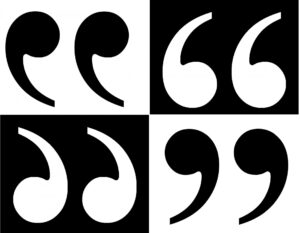What’s an Oxford comma? It’s the comma before and in a list. In the sentence below, there’s an Oxford comma after tea:
We served coffee, tea, and cake to our guests.
Students are sometimes told that God (or Moses, or someone) made a rule that the Oxford comma is wrong. (That happens to journalism students all the time.)
No, it isn’t. The Oxford comma is a choice.
That comma is wrong if you’re writing for a newspaper or magazine. (If omitting that comma messes up the sentence, you put it back in.)
Here are some rules:
- If you’re a journalist, you omit it.
- If you’re an academic, you use it.
- If someone’s paying you to write, you ask them their policy about that comma, and you follow it.
- If that comma (or the lack of it) causes a problem with a sentence, you fix it.
- If you’re writing on your own, you make your own decision.
- What you never (ever!) do is argue about it.












